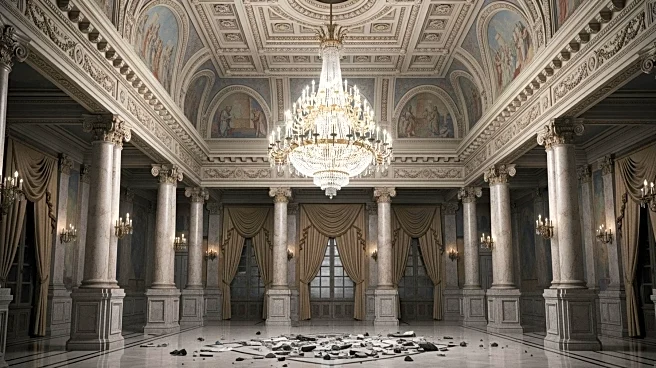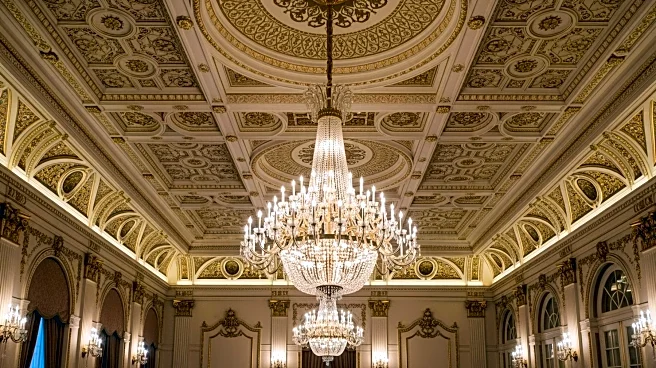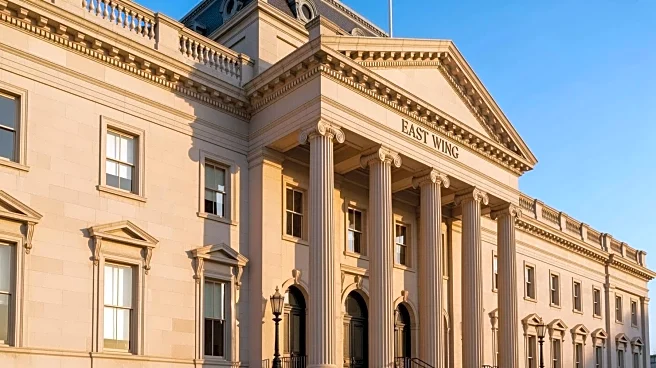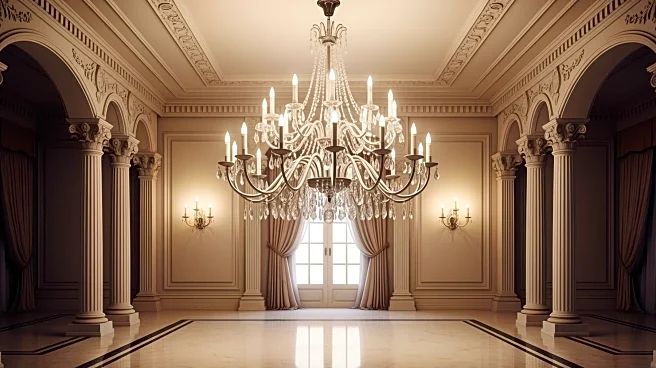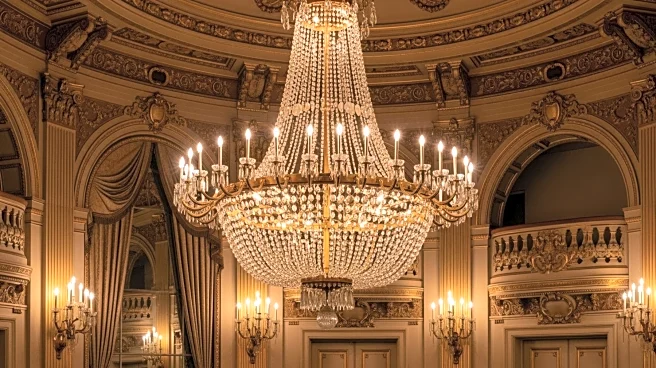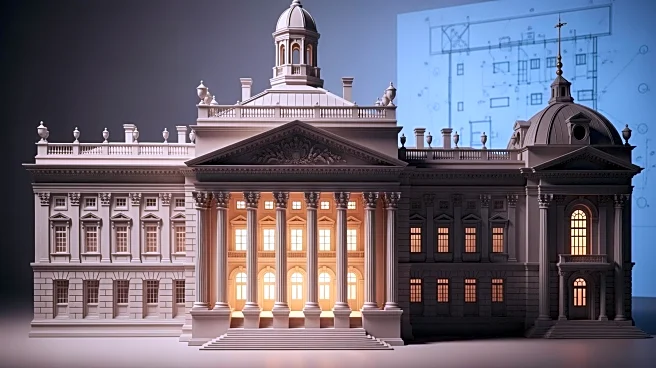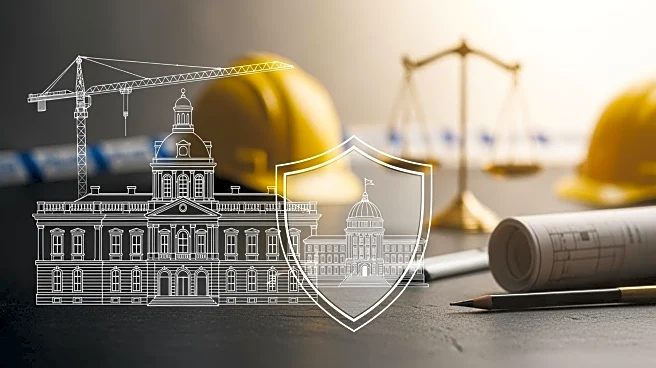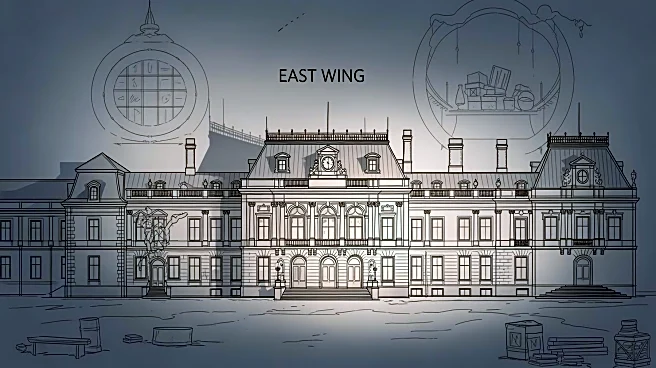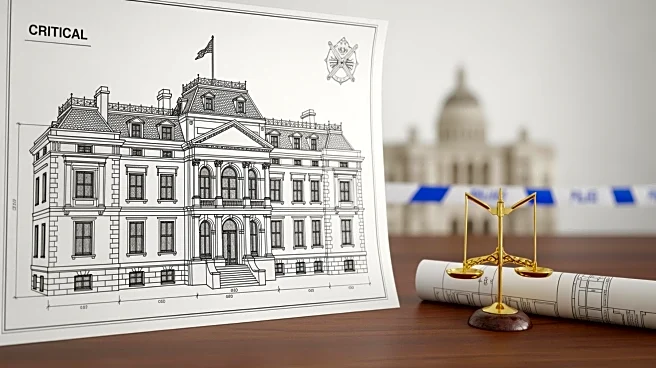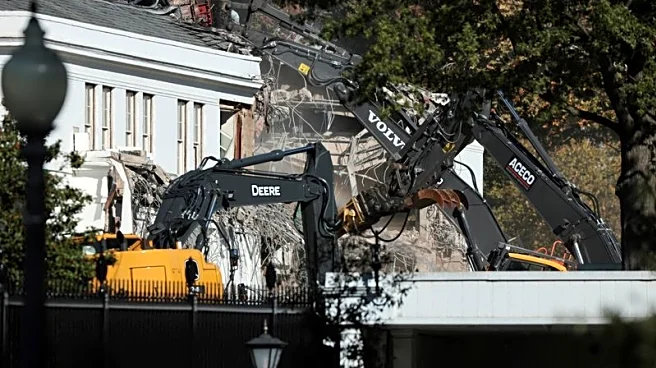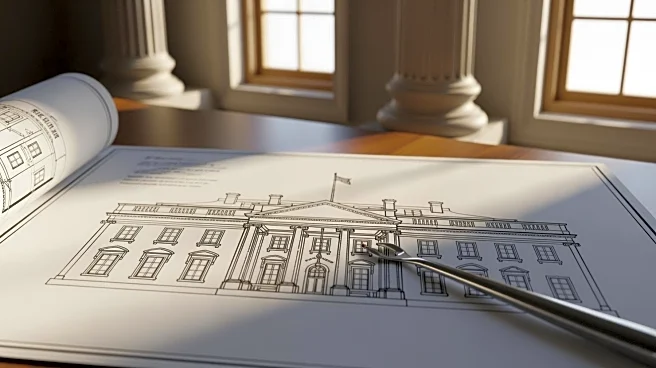What's Happening?
The demolition of the East Wing of the White House to make way for a new 90,000 square-foot ballroom has drawn criticism. The project, part of President Trump's plan, was initially stated to be built without
affecting the existing structure. However, images of the demolition have raised concerns among critics and historians. The privately funded project, costing over $200 million, marks the first major change to the White House since 1942. The National Capital Planning Commission will review the plans post-demolition, although it lacks jurisdiction over the demolition itself.
Why It's Important?
The White House ballroom project highlights tensions between development and historic preservation. Critics argue that the demolition disregards the historical significance of the East Wing, raising questions about the administration's commitment to preserving national heritage. The project also reflects broader debates about the use of private funds for public landmarks and the role of oversight bodies in protecting historic sites. The controversy underscores the challenges of balancing modernization with the preservation of cultural and historical integrity.
What's Next?
The National Trust for Historic Preservation has called for a pause in demolition to allow for public and expert input. The White House plans to submit construction plans to the National Capital Planning Commission soon. The ballroom is expected to be completed before the end of President Trump's term. The ongoing debate may influence future policies on historic preservation and the management of national landmarks.
Beyond the Headlines
The project raises ethical questions about the alteration of iconic national symbols without public consent. It also highlights the potential impact of private funding on public heritage sites, setting a precedent for future developments. The controversy may lead to increased scrutiny of similar projects and a reevaluation of preservation standards for historic buildings.
